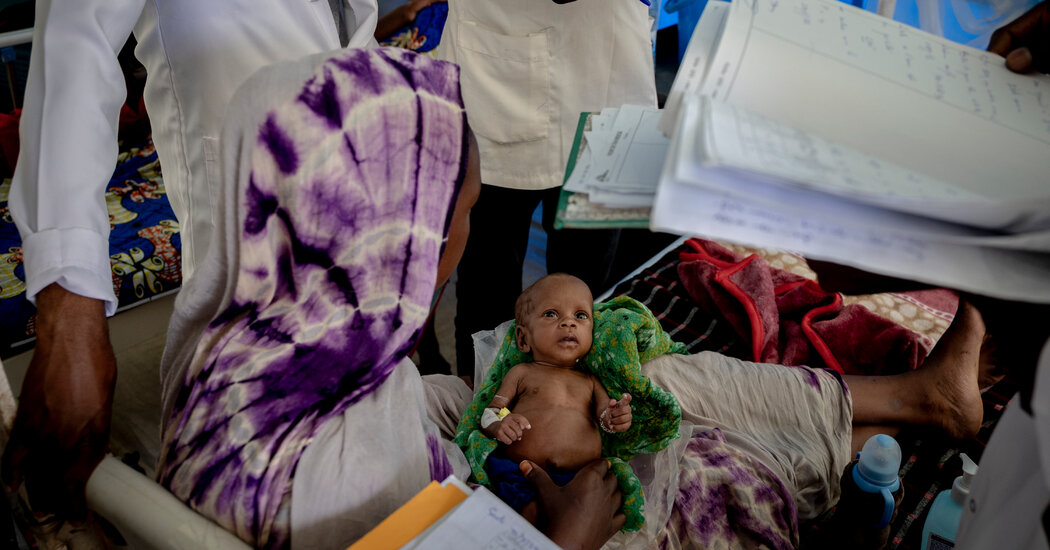Supplies of a highly nutritious treatment are running out, according to UNICEF.
Nearly two million children may die of malnutrition because a product used to treat the condition is in short supply, the United Nations Children’s Fund said on Monday.
Four countries — Mali, Nigeria, Niger and Chad — have exhausted their supplies of the peanut-based, high-nutrient product, called ready-to-use therapeutic food, or are on the brink of doing so. Another eight nations, including South Sudan, the Democratic Republic of Congo and Uganda, could run out by mid-2025.
“Urgent action is needed now to save the lives of nearly two million children who are fighting this silent killer,” Victor Aguayo, UNICEF’s director for child nutrition and development, said in a statement.
Severe acute malnutrition, or wasting, can result from poor nutrition during gestation and in infancy, limited access to safe drinking water, and relentless attacks by multiple infections.
The children may be stunted and may have prominent ribs and other bones, dry skin and brittle hair. They are diagnosed with the condition when they have a very low weight for their height (or length, in the case of infants); a mid-upper arm circumference of less than 4.5 inches; or a buildup of fluid in the legs, arms and face.
Severe acute malnutrition affects an estimated 19 million children under the age of 5 worldwide and may account for about 400,000 deaths among children each year, according to the World Health Organization.
Children who are severely malnourished have weak immune defenses, leaving them vulnerable to the diseases that circulate in poorer countries, particularly in crisis zones, such as diarrhea, pneumonia, malaria and measles.
UNICEF relies on ready-to-use therapeutic food to treat children with severe wasting. Other organizations use similar products to help children at less serious stages of malnutrition. Children may need the food, along with medical care, for up to eight weeks before they are beyond danger.
UNICEF estimated that in 2023, the food reached about 73 percent of the children in need and averted the deaths of 1.2 million children younger than 5.
But war, civil conflicts, climate change and economic crises that have derailed global supply chains have all contributed to hunger emergencies, as have prolonged droughts and floods in the Sahel region of Africa.
In Mali, supplies of the food began running low in late July. In Chad and Niger, it is expected to run out by the end of this month, and in Cameroon by the end of the year.
Since 2022, UNICEF has raised about $933 million to support its malnutrition programs. It is now calling for donations of $165 million to refresh supplies of R.U.T.F., in addition to a $100 million donation that the United States recently made.
